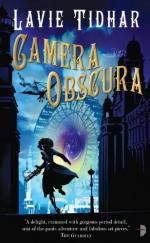|
This section contains 1,707 words (approx. 6 pages at 300 words per page) |

|
Overview
Capturing an image from life was long ago the sole proprietorship of the skilled artist, whose brushstrokes precisely recreated portraits of man and landscape on canvas. That art is now shared by anyone who cares to peer through a camera's viewfinder and snap the shutter. Modern photography had its start in the 1800s, with the invention of the Dageurrotype and Englishman W. H. Talbot's (1800-1877) negative-positive development process. But its roots can be traced to centuries earlier, to a simple mechanism—a dark room, in which light passed through a pinhole, projecting an image on the opposite wall. It was called camera obscura.
Background
More than 2,000 years before the invention of the camera obscura, its earliest predecessor came to light in ancient Greece. In 500 B.C., the philosopher Aristotle (384-322 B.C.) discovered that by passing sunlight...
|
This section contains 1,707 words (approx. 6 pages at 300 words per page) |

|


